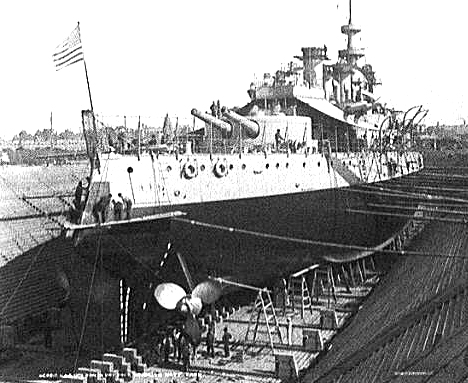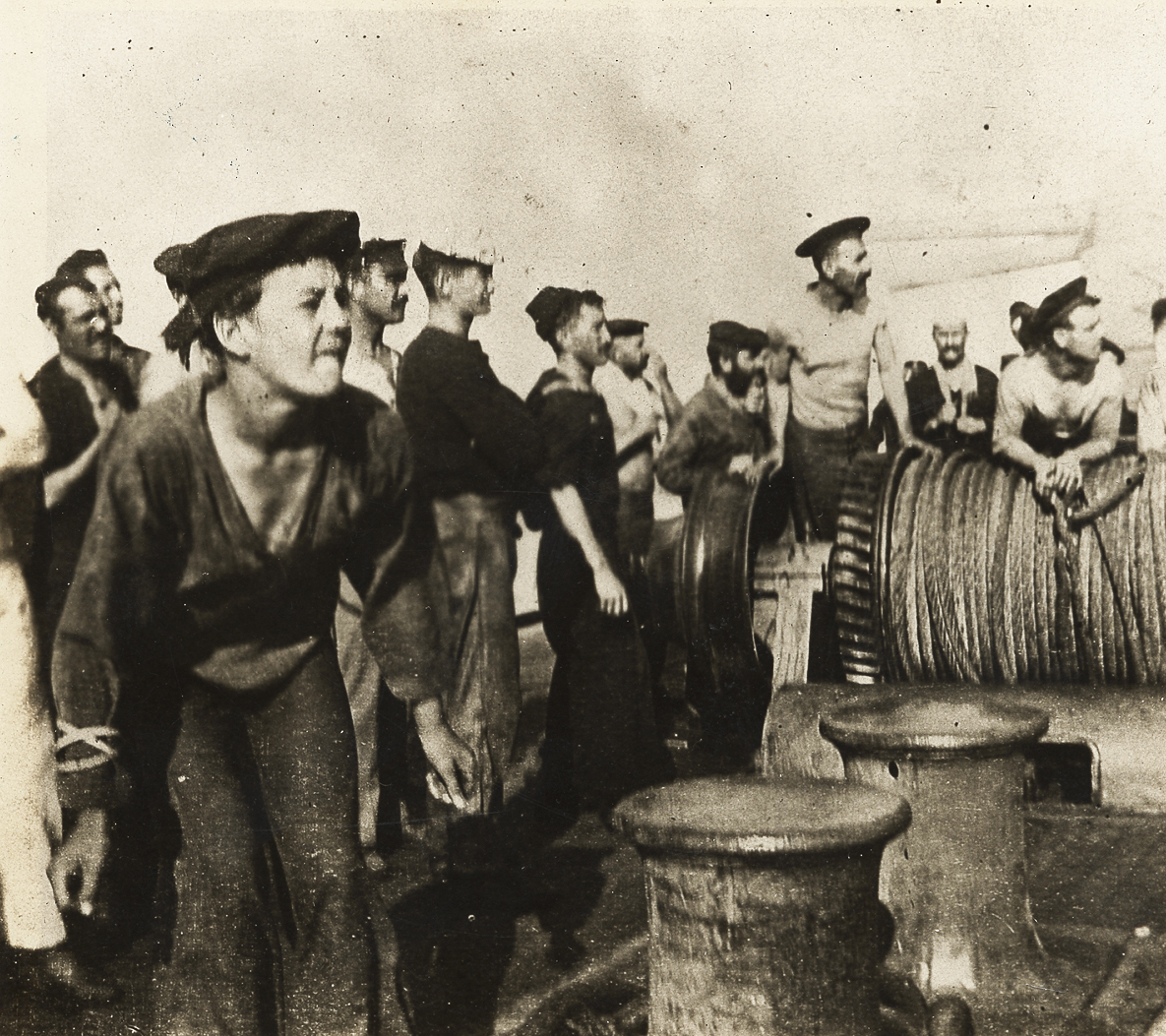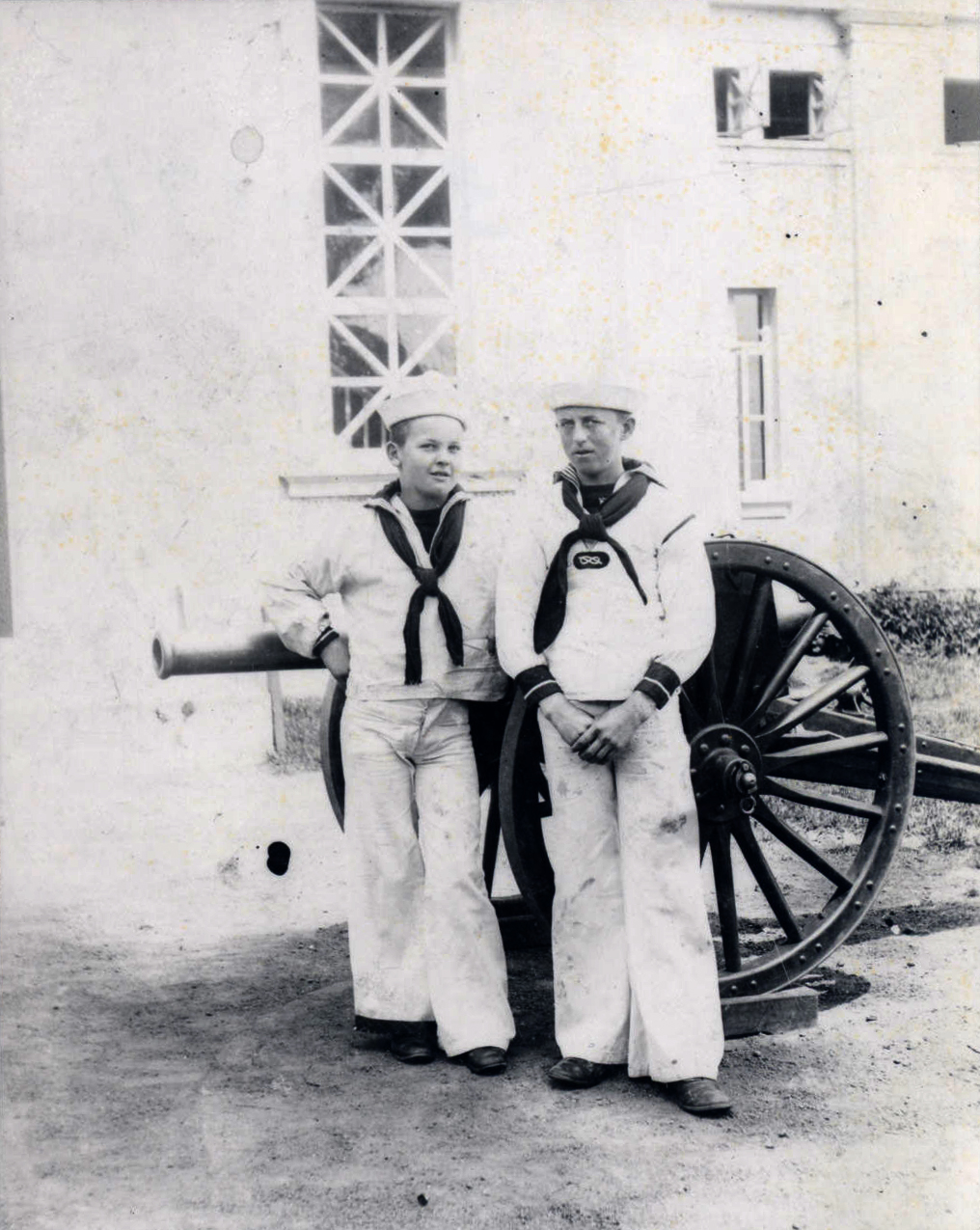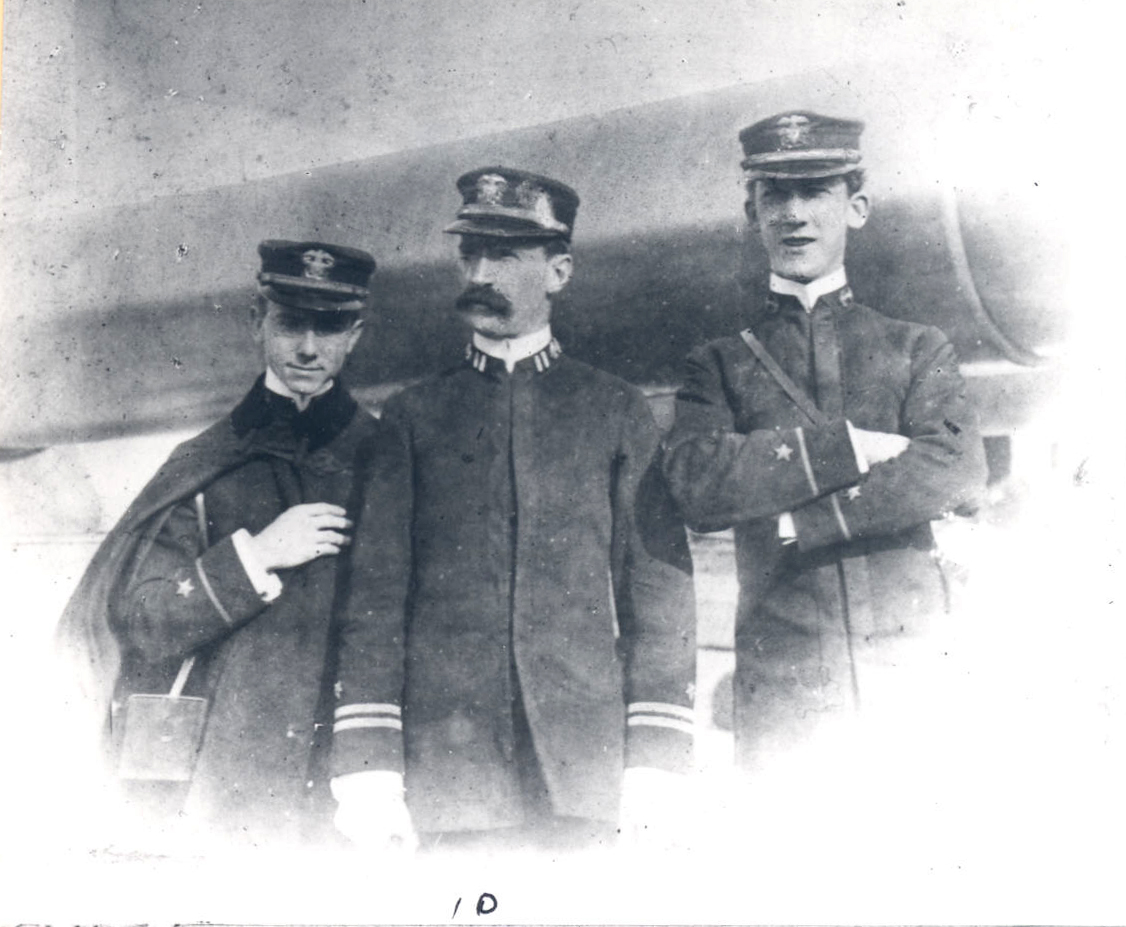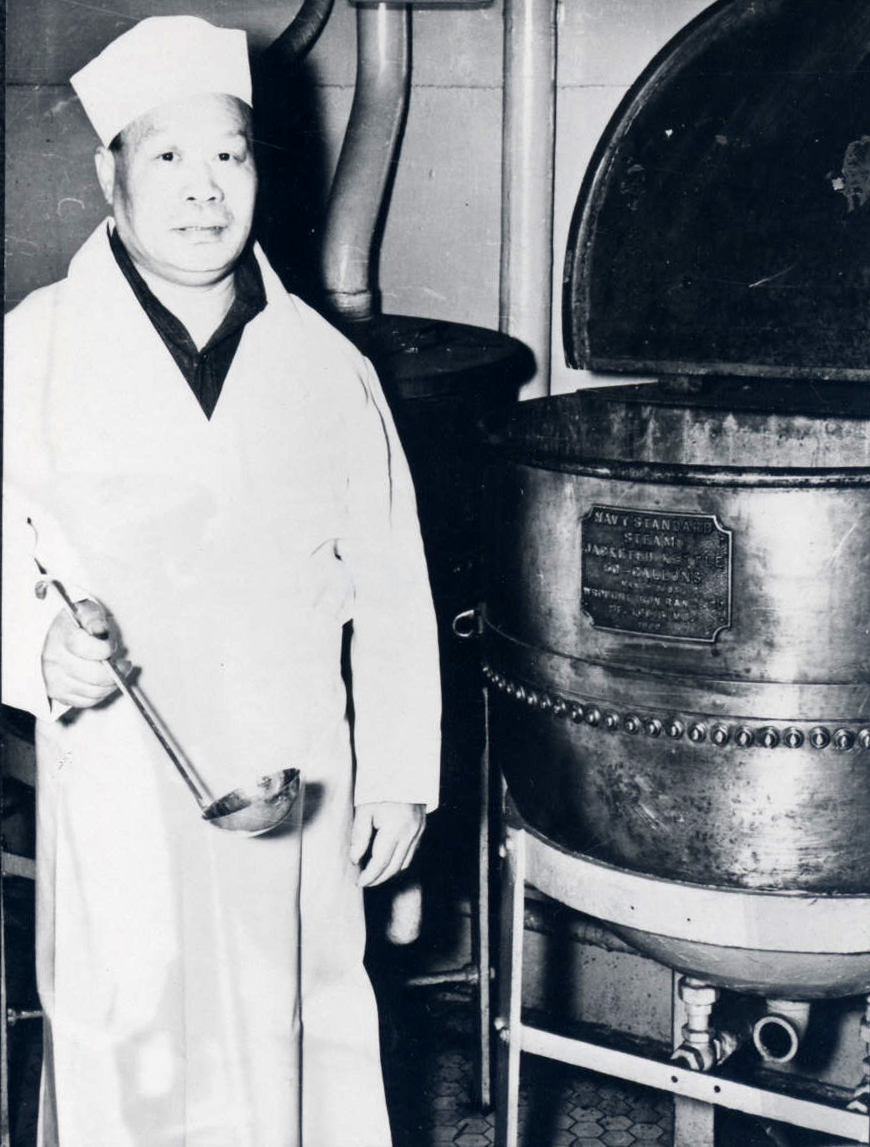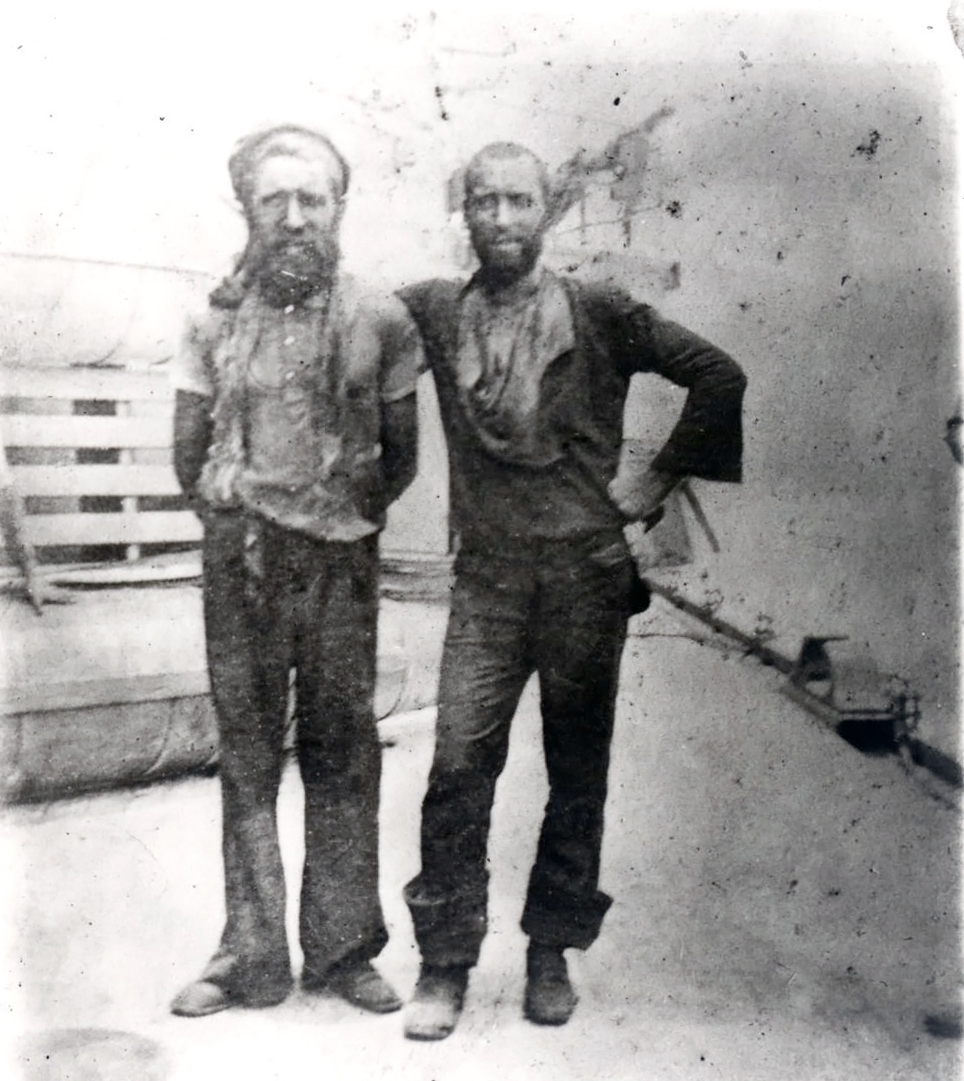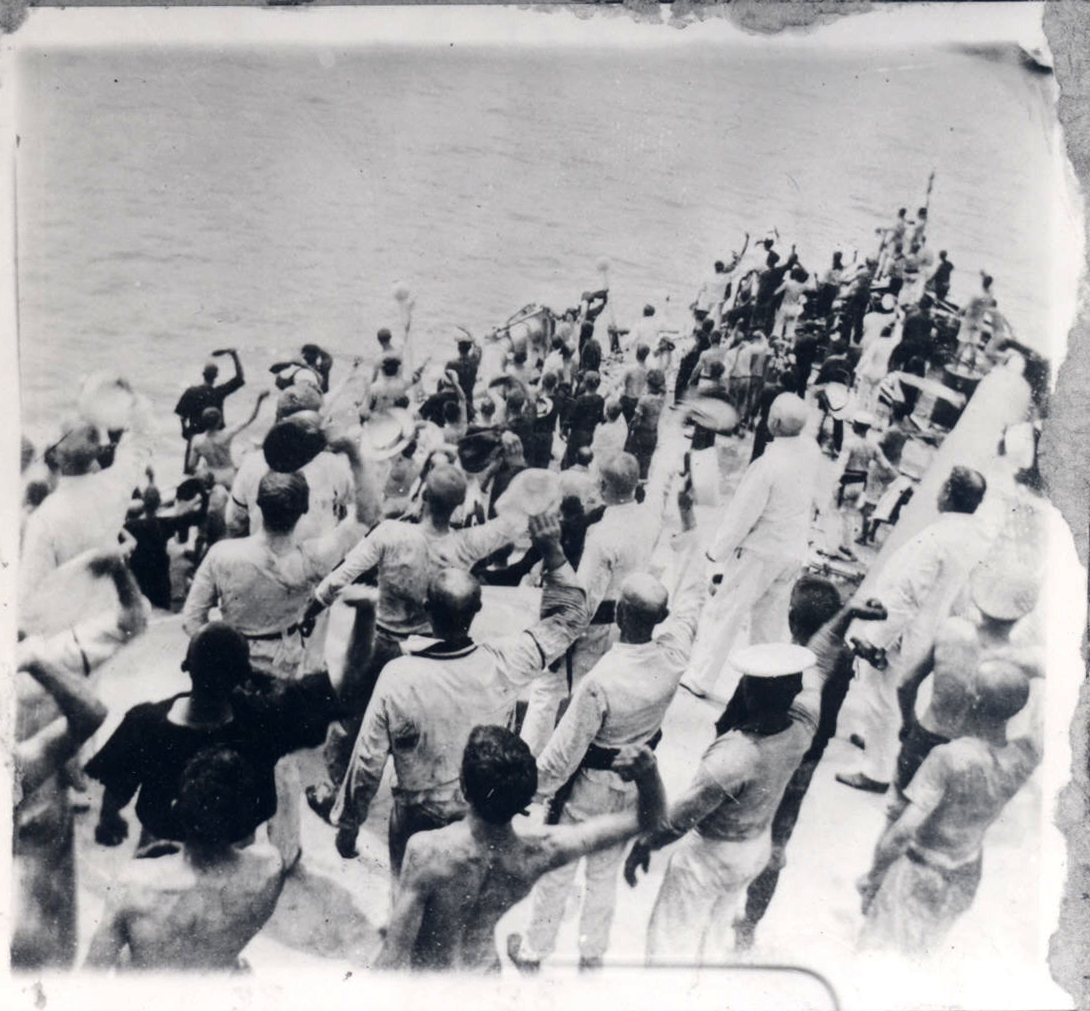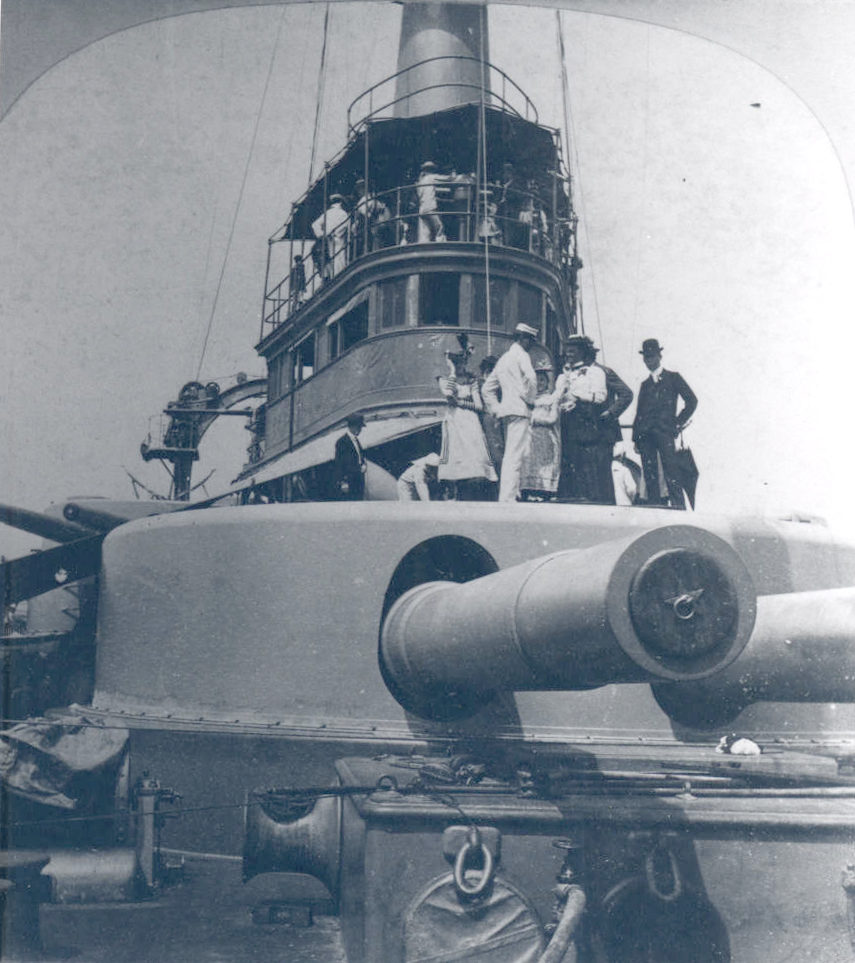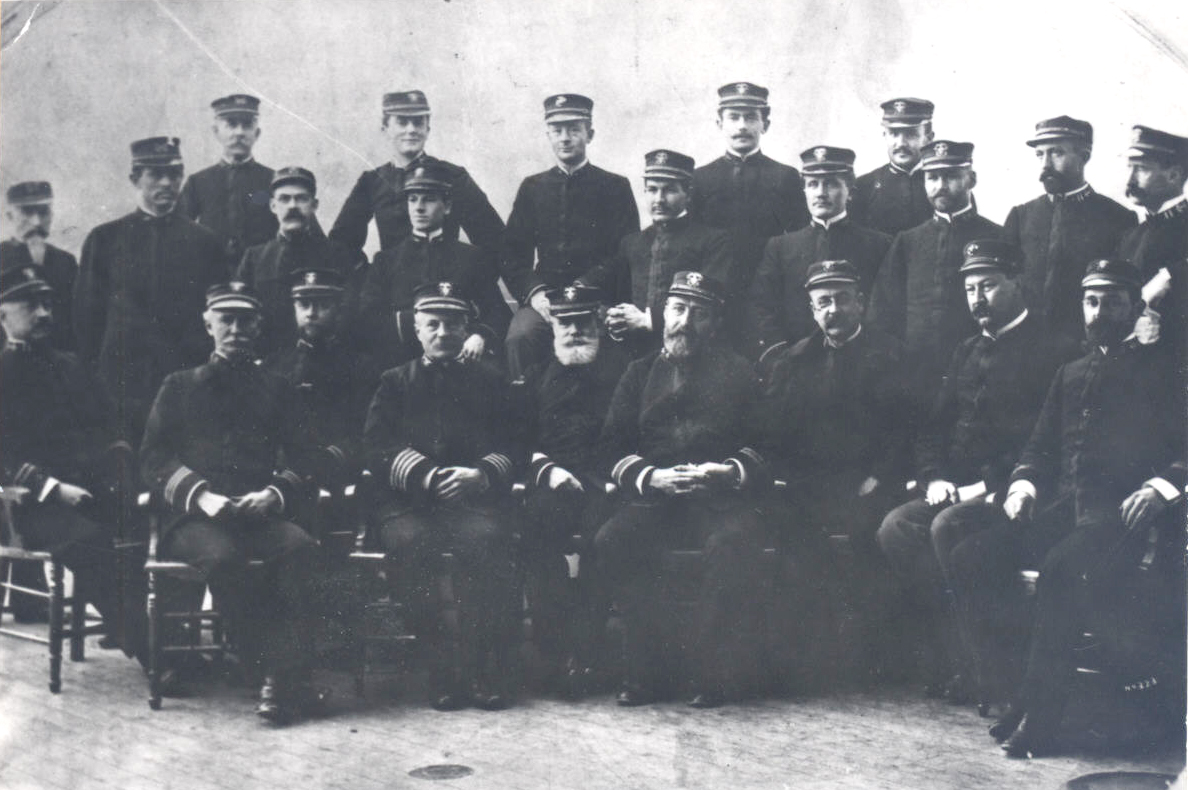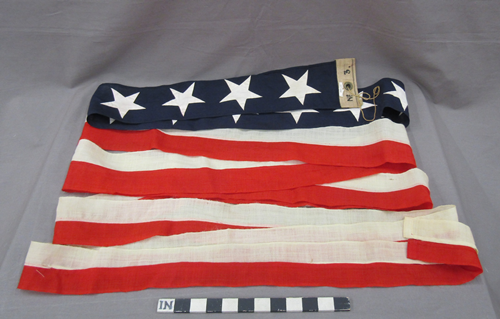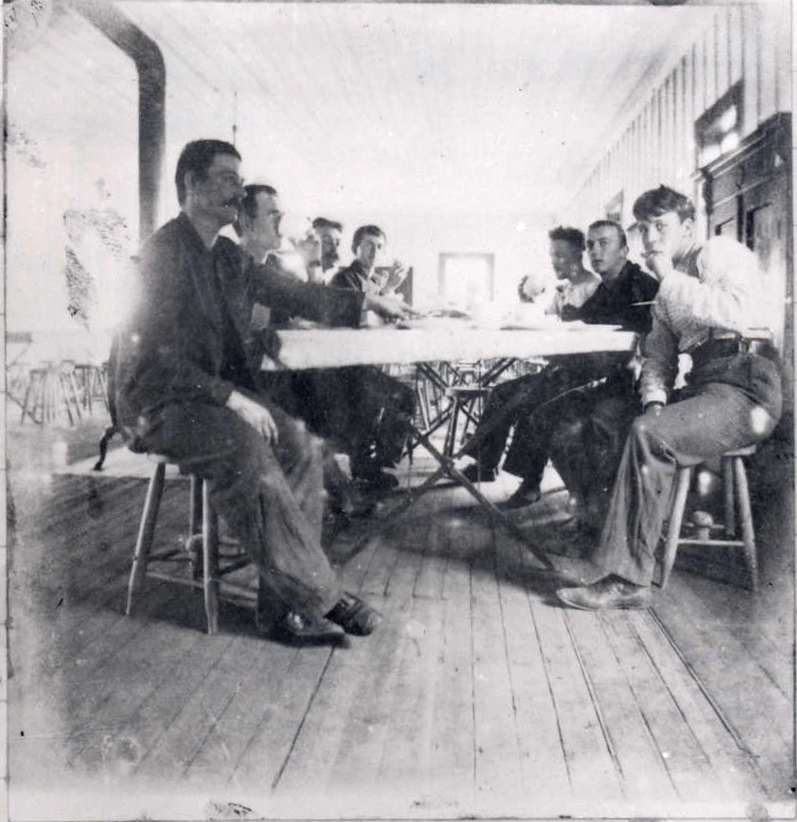In the years after the Civil War, the U.S. government built up its military defenses by developing short-distance or sea-going coastline battleships. One notable feature of these ships was their smaller coal chambers, which held only enough fuel for a 5,000-mile voyage. The Union Iron Works of San Francisco began building the U.S.S. Oregon on November 19, 1891.
Two years later, on October 26, 1893, the heavily steel-armored, forty-two-gunned ship was completed. On July 15, 1896, the U.S.S. Oregon was commissioned, designated solely as an official battleship for the U.S. Navy.
On March 19, 1898, the Oregon was called to fight in the Spanish-American War. The battleship was in the Pacific Ocean and was forced to head south, around the horn of South America, to fight in the Caribbean Sea. Under the command of Capt. Charles Edgar Clark, a fifty-five-year-old veteran of the Civil War, the U.S.S. Oregon, was loaded with two thousand extra tons of ammunition and coal for the voyage and the battle it was about to enter.
The battleship Oregon traveled roughly 250 nautical miles a day, battling harsh seas, and reached Callao, Peru, on May 26, where it joined the North Atlantic Squadron. The battleship had made the journey in an unprecedented amount of time, expending 4,100 tons of coal and traveling 14,500 miles in only sixty-six days. The Oregon exceeded all limitations of the short-distance vessel and established an impressive reputation for itself.
During the battle at Santiago and other actions during the war, the U.S.S. Oregon outmatched and outgunned its adversaries, contributed heavily to the U.S. victory, and impressed the nation with the power of its thirteen-inch guns.
The Oregon saw little action after the Spanish-American War. It served in the Pacific during the Philippine-American War and the Boxer Rebellion of China before it was decommissioned in 1903. It was brought back into service as a reserve battleship in World War I. The Oregon was decommissioned for the final time in October 1919.
On July 14, 1925, the State of Oregon petitioned the U.S. government to preserve the ship as a memorial in Portland. The ship was a floating monument and museum on the Portland waterfront, making it a notable landmark of the city's skyline.
After the bombing of Pearl Harbor in 1941, the U.S. government tore apart the Oregon, determining that the value of the scrap metal was more than its historical value. The U.S. Oregon was gutted on October 26, 1942, and its hull was used as ammunition storage in the battle of Guam, where it stayed for several years.
On March 15, 1956, the ship was sold to the Iwai Sanggo Company, which towed the hull to Japan and scrapped what was left of the Spanish-American war hero. All that remains of the U.S.S. Oregon is a monument made from the mast (which had been removed in 1942) in Portland’s Waterfront Park. The monument was constructed to recognize all who fought and died in the Spanish-American War and the contribution the U.S.S. Oregon made in its victory.
-
![U.S.S. Oregon in dry dock, Brooklyn Navy Yard; photo by Edward H. Hart]()
-
![U.S.S. Oregon Chief Engineer Milligan, Battle of Santiago; photo by Edward H. Hart]()
-
![Crowds greet U.S.S. Oregon at ship's first moorage in Portland at NE end of Broadway Bridge, June 1925.]()
U.S.S. Oregon in Portland.
Crowds greet U.S.S. Oregon at ship's first moorage in Portland at NE end of Broadway Bridge, June 1925. Courtesy Oreg. Hist. Soc. Research Lib. bb002472
-
U.S.S. Oregon in Guam Harbor.
U.S.S. Oregon in Guam Harbor Courtesy Oreg. Hist. Soc. Research Lib. OrHi12494
-
![U.S.S. Oregon crew watch during chase of Spanish ship, Battle of Santiago de Cuba, July 3, 1898.]()
U.S.S. Oregon crew, 1898.
U.S.S. Oregon crew watch during chase of Spanish ship, Battle of Santiago de Cuba, July 3, 1898. Courtesy Oreg. Hist. Soc. Research Lib. ba003243
-
U.S.S. Oregon in Portland.
U.S.S. Oregon in Portland Courtesy Oreg. Hist. Soc. Research Lib., OrHi12105
-
![The boys are under 14 in this photo; they reportedly served on the U.S.S. Oregon until they were 21.]()
Two boys from the battleship Oregon, 1898.
The boys are under 14 in this photo; they reportedly served on the U.S.S. Oregon until they were 21. Courtesy Oregon Hist. Soc. Research Lib., 007904
-
![Stanley, Davis, Wall, Gannon, Johnson]()
Signal crew of the U.S.S. Oregon, 1898.
Stanley, Davis, Wall, Gannon, Johnson Courtesy Oregon Hist. Soc. Research Lib., 004762
-
![Miller, Harrison, and Magill]()
Officers on U.S.S. Oregon, 1898.
Miller, Harrison, and Magill Courtesy Oregon Hist. Soc. Research Lib., 004756
-
![Only Chinese American serving on the U.S.S. Oregon during the Spanish-American War]()
Mark Low Tim on U.S.S. Oregon.
Only Chinese American serving on the U.S.S. Oregon during the Spanish-American War Courtesy Oregon Hist. Soc. Research Lib., 018102
-
![Jim lyones (left) and an unknown fireman stand on the deck of the U.S.S. Oregon.]()
Firemen from the U.S.S. Oregon, July 3, 1898.
Jim lyones (left) and an unknown fireman stand on the deck of the U.S.S. Oregon. Courtesy Oregon Hist. Soc. Research Lib., 004730
-
![The Cristobal Colon surrendered on July 3, 1898, after battling with the U.S.S. Oregon]()
Crew of the U.S.S. Oregon cheer a Spanish surrender, 1898.
The Cristobal Colon surrendered on July 3, 1898, after battling with the U.S.S. Oregon Courtesy Oregon Hist. Soc. Research Lib., 004739
-
![The 13-inch gun on the deck destroyed the battleship Vizcaya during the Battle of Santiago, 1898]()
U.S.S. Oregon.
The 13-inch gun on the deck destroyed the battleship Vizcaya during the Battle of Santiago, 1898 Courtesy Oregon Hist. Soc. Research Lib., 019041
-
![]()
Captain and officers of the U.S.S. Oregon, 1897.
Courtesy Oregon Hist. Soc. Research Lib., 017960
-
!["Homeward Bound" pennant of the U.S.S. Oregon, flown after the Battle of Santiago in passage to New York.]()
Related Entries
-
![2nd Oregon Volunteer Infantry]()
2nd Oregon Volunteer Infantry
Relations between the United States and Spain were already strained ove…
-
![Oregon Soldiers in the Spanish-American and Philippine Wars, 1898-1899]()
Oregon Soldiers in the Spanish-American and Philippine Wars, 1898-1899
In the course of the Spanish-American War, the United States attacked a…
Related Historical Records
Map This on the Oregon History WayFinder
The Oregon History Wayfinder is an interactive map that identifies significant places, people, and events in Oregon history.
Further Reading
Andrews, Silvie. "Homeward Bound. The Battleship Oregon Pennant and Imperialism in Oregon." Oregon Historical Quarterly vol. 122, no.3 (Fall 2021): 278-291.
Gannon, Joseph C. The U.S.S. Oregon and the Battle of Santiago. New York: Comet Press, 1958.
Lomax, Ken. "A Chronicle of the Battleship Oregon." Oregon Historical Quarterly 106:1 (Spring 2005), 132-145.
Sternlich, Sanford. McKinley's Bulldog: The Battleship Oregon. Chicago: Nelson Hall, 1977.

